Subsequently, it is not uncommon to need a part custom made. If that's the case, we may be able to help. Please email pictures of the movement to us here at Clockworks.
Mechanical clock hand nuts
One of the most common parts a Mechanical clock needs is the hand nut. As we said before, the older the clock the harder things are to find. So, the hand nuts Clockworks offer are for movements made after the 1930's.
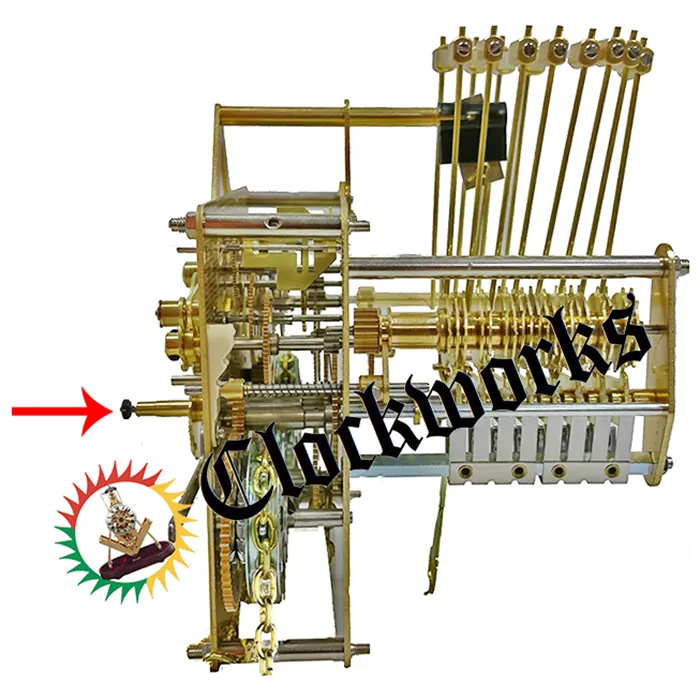
Prior to 1930 clock hand nuts
There were not many standards on what the hand nut size should be on the early clocks. However, prior to around 1930 there is no telling what will work. In other words, it is literally trial and error. There was no standard hand nut size.
Subsequently, any hand nut we offer, may, or may not, work. This includes cuckoo hand nuts, American clock hand nuts, or German hand nuts. However, with even all of these assortments, there is a chance none of them will work on the clock.
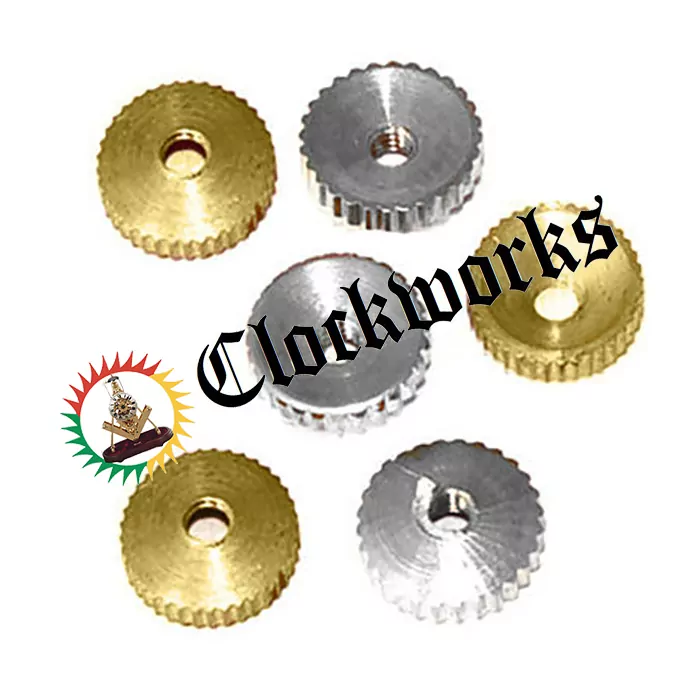
Post 1930 clock hand nuts
Generally speaking, what we have to offer in the three types of clock hand nuts will cover most of the post 1930 Mechanical clocks.
The cuckoo hand nuts fit about 80% of the post war German made cuckoo clocks.
So, the American clock hand nuts fit many of the mechanical time strikes that were so popular. German hand nuts fit most post war German made mechanical clocks, with the exception being a few large grandfather clocks.
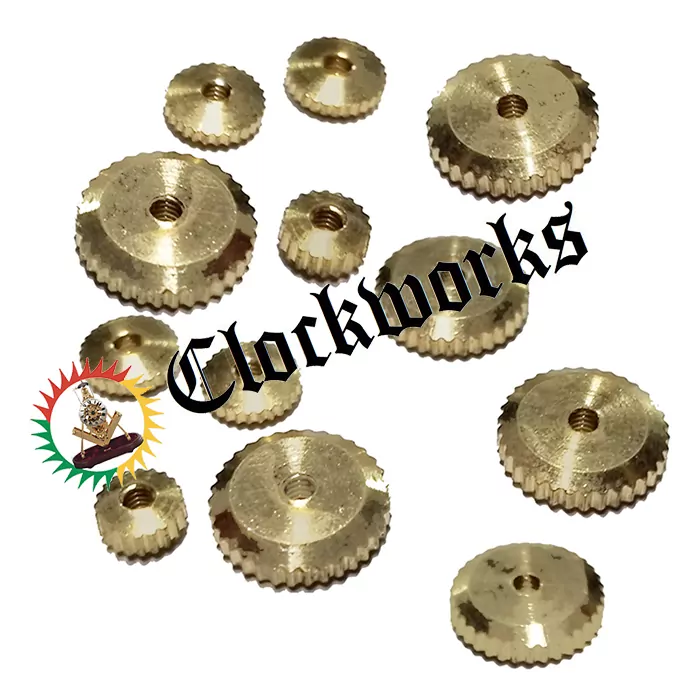
Clocks that do not take a hand nut
However, not all clocks require a hand nut. Some antique mechanical clocks require a clock hand washer and a tapered pin instead. These secure the minute hand as an alternative to the hand nut.
The washer may have a small square hole, or large, oblong or round hole. Clockworks offers an assortment of 100 clock hand washers that includes all the styles above. Use a taper pin to secure the hand with the washer on top of it.
Insert the taper pin into the hole in the end of the minute hand arbor to secure the washer and minute hand to the clock. A taper pin is a small brass or steel rod that is wide on one end and skinny on the other. Clockworks offers them in an assortment of 100 to ensure the right one is there.
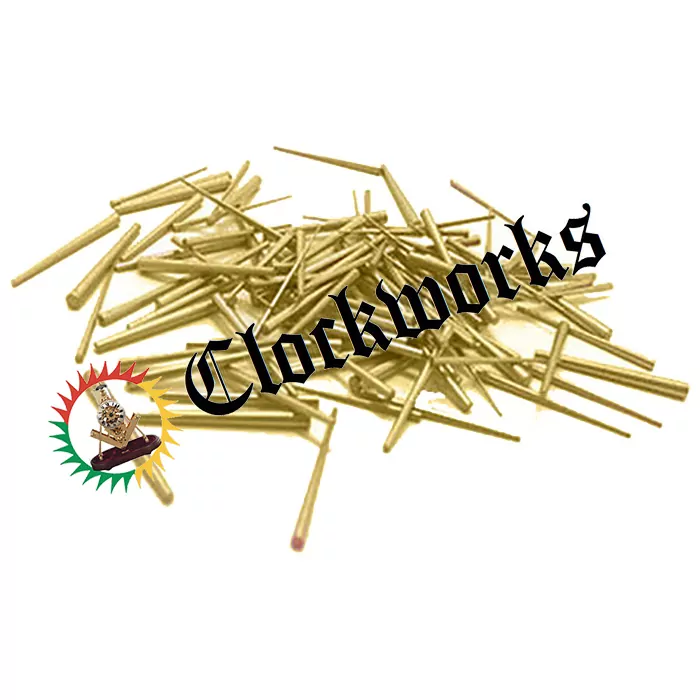
Clicks and click springs
Mechanical clocks with a ratchet wheel use clicks. This can mean a spring driven clock or a weight driven clock.
Clicks keep it wound in only one direction. Both have a ratcheting function as in a wheel being able to turn one way only. It spins one way and makes a clicking sound when this is done. That clicking sound is the click. This is the small part that makes the wheel turn in only one direction.
The click is held in the down position with some pressure from what is known as a click spring.
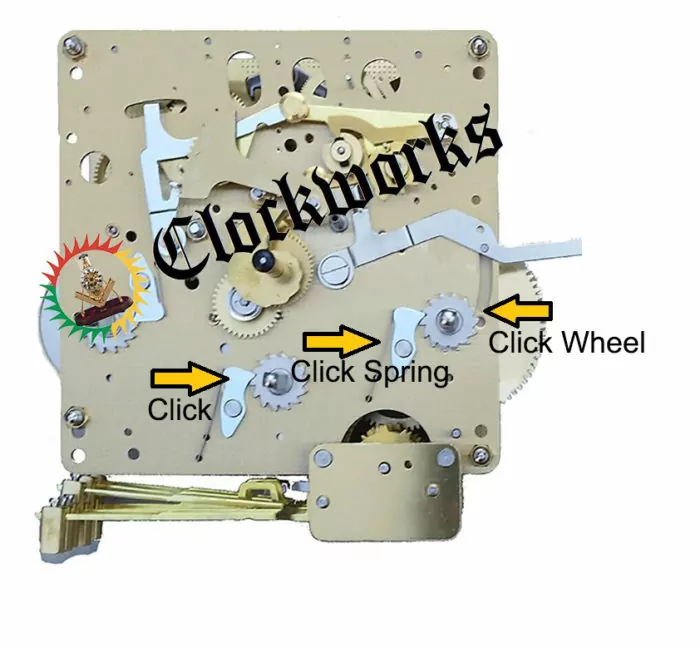
Clicks on spring driven movements
Often when a mainspring breaks the click will loosen considerably from the shock.
Replace or tighten the loose click to ensure it will not let go when winding the clock with the key.
It is not uncommon to think the mainspring broke when really the click eventually came loose and let the mainspring slip. Once the click on the ratchet slips the mainspring lets loose and momentum of it unwinding is unstoppable.
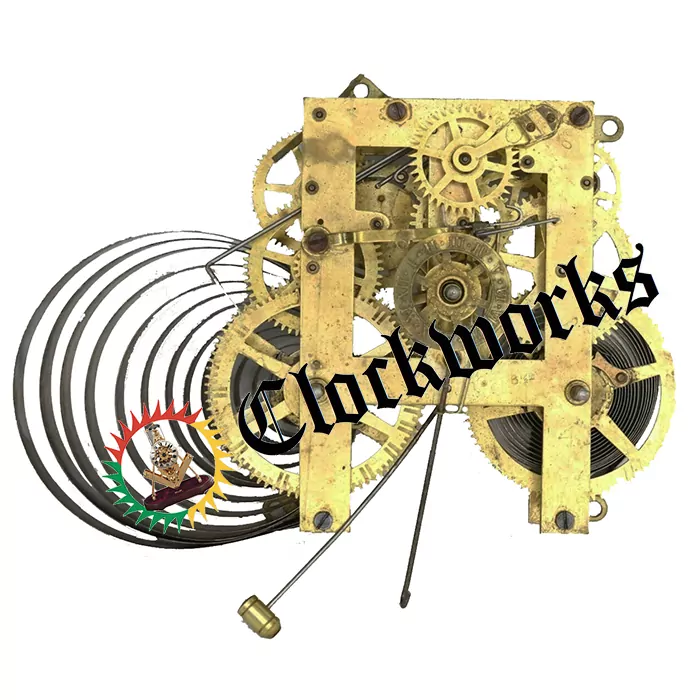
Clicks on weight driven movements
In general, this is a harder style to replace and not really available on the market. If you need these for a weight driven ratchet wheel it is best to replace the entire wheel. Replacing the entire wheel will include the ratchet wheel, the arbor it is on and also the gear.
It will have the click and spring on it all as one unit. This maybe the ratchet wheel on a chain driven clock or a cable drum for a cable driven clock. In both situations it is best to replace the entire component with the click and spring together. That way is it complete and done the best and quickest way.
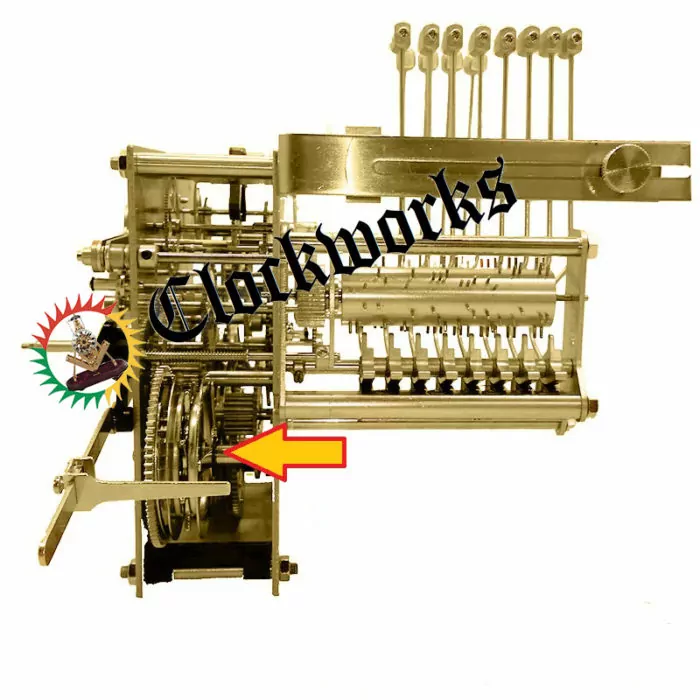
Seat-Board Screws
Seat-Board Screws are for modern German floor clock models that have a seat-board. The rectangle washer goes under the seat-board and the screw goes up through it and into the movement posts. Sold as a pair of washers and 1 3/4 inch long screws. Select which length you need in the drop down menu.

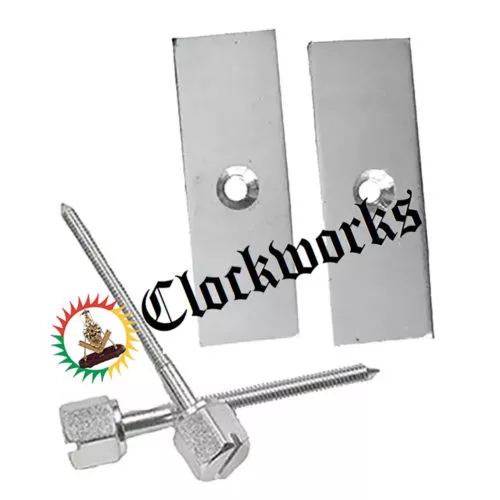
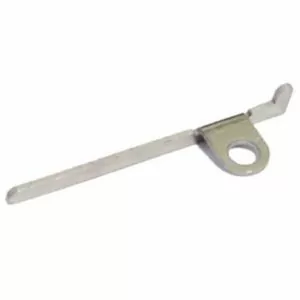

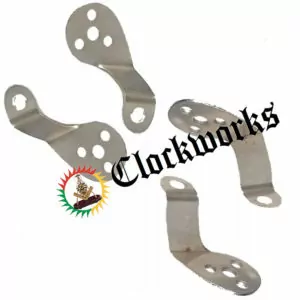
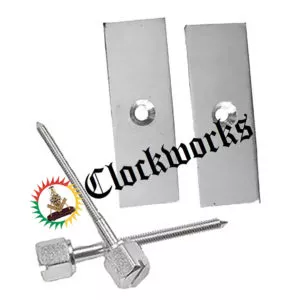











I have an Emperor clock with Urgos mechanical movement UW03041 or 03X012. I need the two nuts that holds the movement into the case or the thread size of the two threaded studs. Also do you sell just the lead weights? I need a 7.7 lb. strike, 7.7 lb. time and a 9.9 lb. chime weight.
Hi,
That clock takes 1 weight at 7.7LBS and two weights at 9.9LBS from this link if the pendulum bob diameter is 8 1/2 inches wide or more
https://www.clockworks.com/clock-parts/clock-weights.html
Or it takes 2 weights at 7.7LBS and 1 weight at 9.9LBS from this link if the pendulum bob is less than 8 1/2 inches wide
https://www.clockworks.com/clock-parts/clock-weights.html
The heaviest weight would go on your right as you face the clock.
The lightest weight will go on your left as you face the clock.
The middle is light or heavy depending on the bob diameter.
(The larger bob diameters require more weight in the center.)
James Stoudenmire
30yr Clockmaker
Author of Clockworks.com
I am so glad I found these thank you!
Iam glad it worked out. Great Job !
James Stoudenmire
30yr Clockmaker
Author of Clockworks.com
Where exactly do the seatboard screws on my tempus fugit grandfather clock goes.I need a picture to see location as I cannot see it under the bottom of the seatboard
Hi,
There are two threaded holes in the bottom pillars that hold the movement plates together.
More on installation
https://www.clockworks.com/mechanical-cable-driven-movement-only-instructions.html
James
I was given a Hermle 451-050 movement, I didn’t receive any instruction or hardware to mount it. Can you tell me what I need and does anybody have any instructions
what is the thread size
For what movement?
Different threads, and lengths for different movement series
James